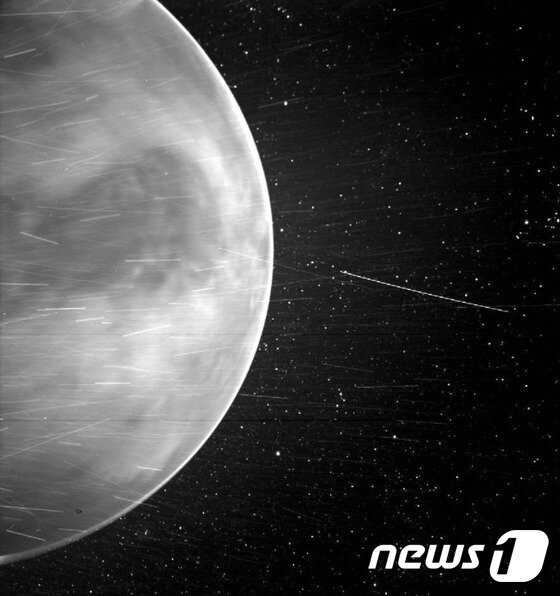 |
| A photo of the surface of Venus taken last August by the Parker Solar Probe launched by NASA in July 2018 (Photo = NASA) © News1 |
A photo of the solar probe Parker Solar Probe launched by the National Aeronautics and Space Administration (NASA) to study the secrets hidden in the sun is released, drawing attention.
According to CNN on the 24th (local time), NASA released a picture of the surface of Venus, taken by Parker Solar Probe on July 1st last year.
Launched on August 12, 2018 by NASA, the probe aims to orbit the sun for seven years, using Venus’ gravity to get as close as possible to the sun and photograph the sun’s surface.
This time, NASA’s photo of the surface of Venus was taken by the Parker Solar Probe for the third time as it was close to Venus.
Previously, the photos showed only the atmosphere of Venus due to the carbon dioxide surrounding Venus, but this time, the surface of Venus was intact and surprised everyone.
In this photo, according to NASA, a faintly glowing band can be found around Venus, which scientists believe are’night-light’ or’the light emitted when oxygen atoms recombine into molecules in the atmosphere’.
There is also a darker place in the center of the picture than the other parts, which is Aphrodite Terra, the highest point on Venus. It is known that the reason this area looks dark is because the temperature is 30 degrees or more colder than the surrounding area.
The reason the probe was able to photograph the surface of Venus was thanks to the wide-angle imager (WISPR) mounted on the probe to photograph the surface of the sun.
WISPR is designed to take photos of the solar corona (a thin layer of gas in the outermost layer of the solar atmosphere), solar wind, and the outside atmosphere of the sun with visible light.
Meanwhile, according to NASA, the Parker Solar Probe flew on the surface of Venus for the fourth time on the 20th, and the observed data is expected to be transmitted to Earth by the end of April.
